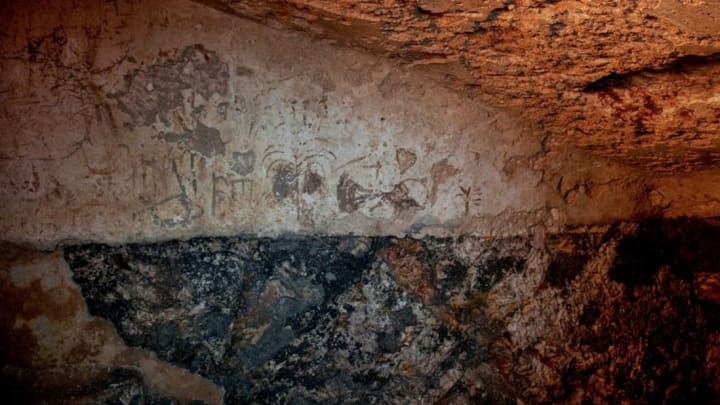Archaeologists have discovered a 2000-year-old ritual bath at a construction site in Jerusalem where a new kindergarten is being built, according to the Israel Antiquities Authority (IAA). The site was first spotted two months ago during an archaeological inspection of the site (routine in Jerusalem, with its millennia of continuous habitation), when IAA's Amit Reem and his team spotted an underground cave housing a well-preserved mikveh, or ritual bath, flanked by two benches.
Intriguingly, the walls are adorned with Aramaic inscriptions written in cursive Hebrew script and drawings of a boat, palm trees, various plants, and possibly a menorah, all rendered in mud, soot, and incising.
The bath was constructed in the 1st century CE, during what's known as the Second Temple Period.
“There is no doubt that this is a very significant discovery," according to a statement issued by Royee Greenwald and Alexander Wiegmann, the excavation directors. "Such a concentration of inscriptions and symbols from the Second Temple period at one archaeological site, and in such a state of preservation, is rare and unique and most intriguing.”
They've yet to decipher the inscriptions, which may be names. Most of the symbols are common visual elements for the time period—except for the image that might be a menorah. If it is, it would be an exceptionally rare find, because "in those days, they abstained from portraying this sacred object, which was located in the Temple," the archaeologists said. "On the one hand the symbols can be interpreted as secular, and on the other, as symbols of religious significance and deep spirituality.”
Here's a video of the site:
[h/t The Times of Israel]
